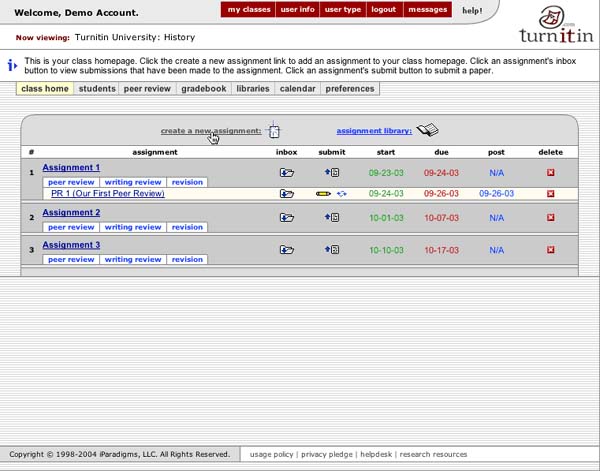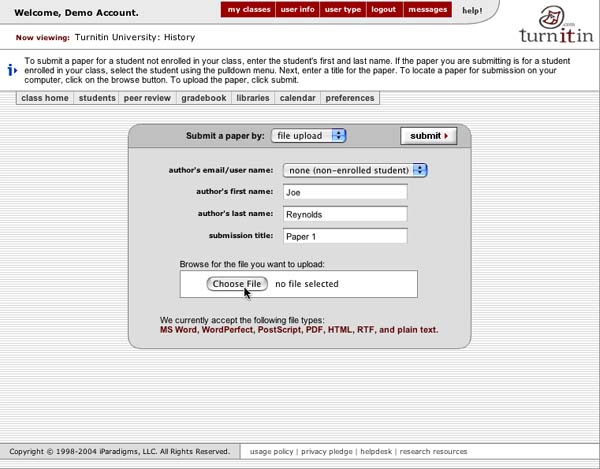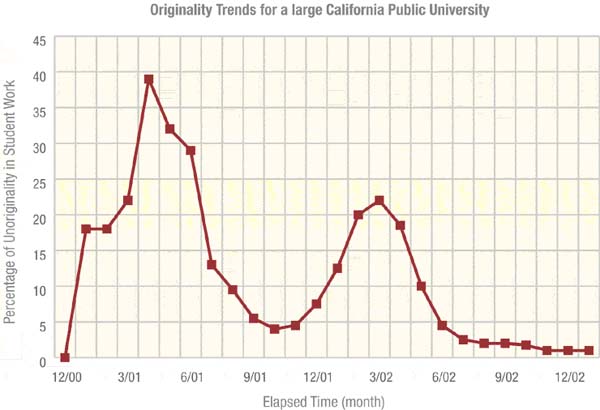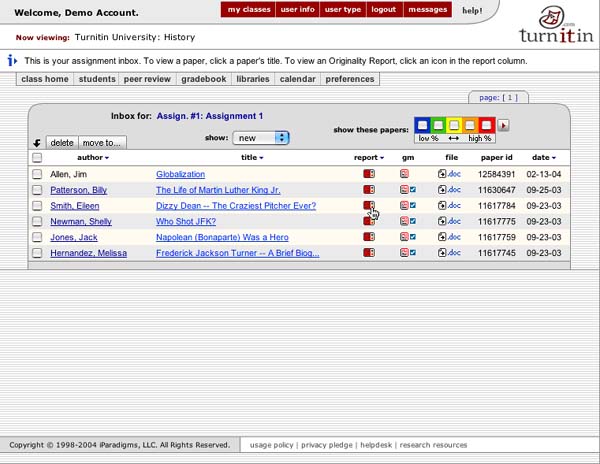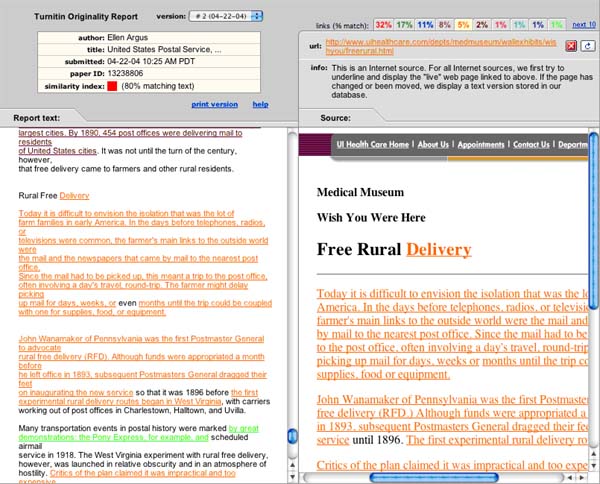| Fall 2004 |
||
| PREVIOUS|PAGE 1 | ||
| Plagiarism Dead in Its Tracks? Carol Budd |
||
Over the course of my tenure as an undergraduate laboratory instructor, I have had more than my share of academic dishonesty cases. What to do about it? I used to make personal arrangements with young first-year students to help them overcome the rigors of college scrutiny. Sometimes it was useful, sometimes it was not. I spend too much time developing good assignments to allow students to circumvent their responsibility and integrity by plagiarizing. I really don’t believe that students are inherently dishonest, but the ability to quickly search and cut and paste from Internet sources when the time crunch hits is too tempting. In a recent 2003 national survey, thirty eight percent of undergraduate students admitted to plagiarizing material from the Internet. Three quarters of students say that their peers cheat. The availability of unoriginal work is obvious from any online search. Places such as Genie 4 Custom Papers, Cheathouse.com, CollegeTermPapers.com, and SchoolSucks are just a few of the resources that students access digitally to accomplish assignments. I have neither the time nor the energy to browse these resources to determine how they circumvent my work. Recently, our library subscribed to Turnitin.com, an online plagiarism prevention tool. It is a proprietary system that allows instructors to submit student work for identification of unoriginal material. The instructor sets up a class account,
Simply logging on then gives the instructor the ability to download student papers to the site.
The paper submitted is instantaneously compared to three comprehensive content sources: an Internet database of over 4.5 billion pages that is updated daily by over 40 million pages, an exclusive content database of millions of published books and journals from Proquest, and a database of over 10 million papers already submitted to Turnitin.com. The following chart from the Turnitin.com site shows how implementing this service decreased student plagiarism at a large California university.
When I log in to Turnitin.com and submit a student paper, the paper receives an originality report. The color red is not good.
By clicking on the red icon, an originality report is generated. The report can be placed side by side with the source of the plagiarism.
This report provides the documentation needed by our Academic Honor Council in the submission of an allegation of academic dishonesty. It is hard to argue with the documentation. To date, our department has seen many fewer allegations of plagiarism. In fact, our third week “Learning to Use the Library as a Research Tool” lab explicitly demonstrates how we use turnitin.com with two major assignments submitted in their first semester. In the past year since implementation, we had two allegations of plagiarism. Those caught said they didn’t believe we would use Turnitin.com. We would get two to three every semester prior to this demonstration. Use of this resource has assisted me in focusing on those aspects of teaching that I enjoy and left the integrity issue where it belongs, squarely as the responsibility of the student. My understanding is that an institutional license costs $300. However, I believe that individuals still have free use. I learned about the service from departmental colleagues who in turn communicated their use to administrators with the dollars to implement the service. I am glad they did.
|
||
| PREVIOUS|PAGE 1 | ||
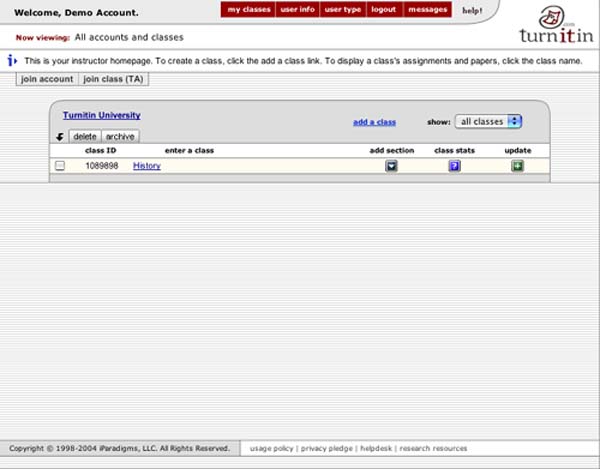 can set
up multiple class sections, and then within each section sets up the
assignments that will be evaluated for plagiarism.
can set
up multiple class sections, and then within each section sets up the
assignments that will be evaluated for plagiarism. 